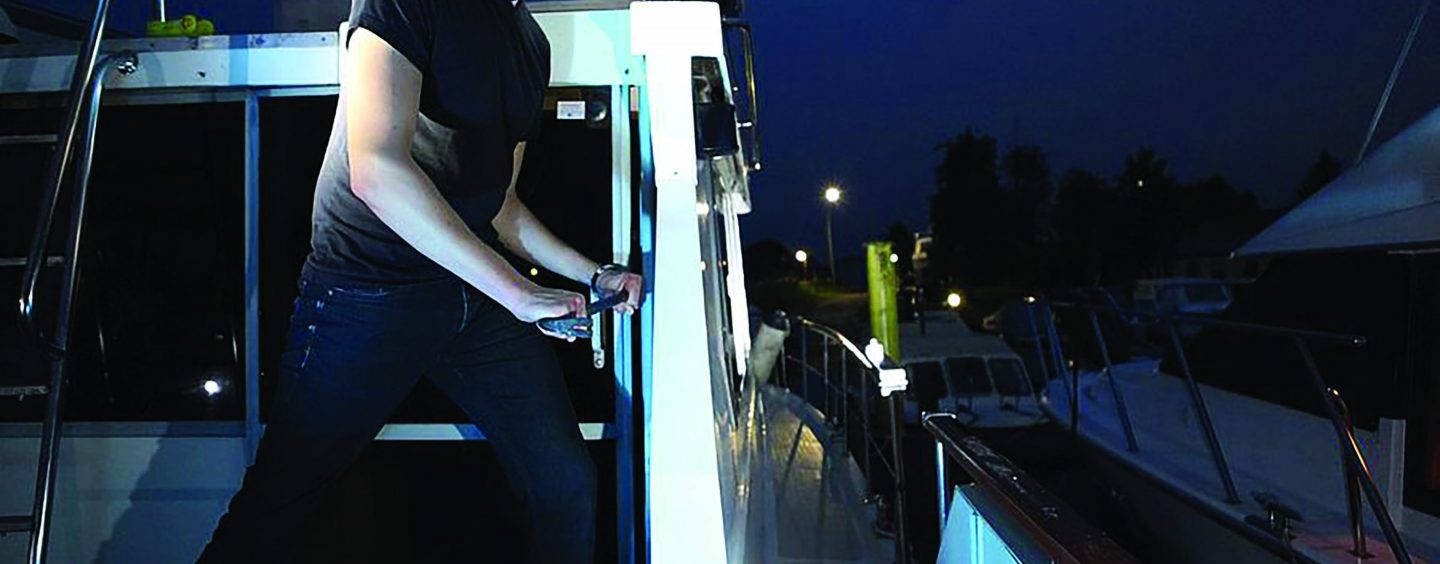Unlike house or car burglaries, which are generally drug-related crimes, yachts are often targeted as part of a professionally organised series of burglaries. This is because the stolen goods are much harder to sell on, as the market is much more limited. The items most likely to be taken are expensive navigation electronics and outboard motors. Here are some tips for making a burglar’s job more difficult and for protecting your property.
PROTECTION AGAINST BURGLARY AND THEFT
There are a number of mechanical security measures available in a variety of models and price classes from all good specialist dealers. It can also be a good idea to supplement these with electronic solutions. Acoustic alarm systems are an effective investment in marinas that are usually remote and deserted at night, as they scare away intruders and attract attention. GPS-based tracking systems are also becoming increasingly popular. A tracking system is certainly very useful for tracing stolen yachts or larger outboards. However, the aim should always be to prevent the theft from happening in the first place. For this reason, when leaving the yacht: never leave valuable items on board; always firmly secure companionways, lock boxes and hatches; turn off the master switch; activate all alarm and tracking systems; and do not ‘hide’ any keys on board or in the cockpit.
SECURING YOUR OUTBOARD
For smaller outboards that are fixed to the transom using tommy screws, the U-lock
is a standard method of protection. However, the plastic or aluminium wings on the screws, as well as the U-lock itself, are relatively easy to break with bolt cutters or ice spray. A better solution is a toggle latch, which covers the whole wing nut and is made from high-strength stainless steel. Another highly effective alternative is a rail lock that fits over both tommy screws. Larger outboards that are bolted or screwed to the yacht have a naturally high level of protection. Because the through bolts generally pass down into the ship’s interior, the thief must first go into the boat to undo the bolts. Experience shows that this requires a second person to open the locknuts. However, this doesn’t stop the burglar from targeting them.
SECURING THE STORAGE LOCKER
The storage lockers should be kept locked at all times and should not contain any valuable pieces of equipment. As standard padlocks can easily be forced open, some manufacturers build in storage lockers that can be bolted from the inside. Built-in locks are also available for storage lockers.
SECURING YOUR TRAILER
To protect against theft, trailers are usually attached to fixed objects using chains or wire cables. Additional protection can be ensured with wheel clamps, rim locks over the coupling, and disc locks. The area should also be well fenced in, lockable and/or monitored, and the trailer secured.
SECURITY FOR WINTER STORAGE
Nautical equipment, such as plotters, radars, GPS, binoculars and life jackets should not be left on board during winter. Loose nautical items stored off the boat, for example in your house, are also covered by Pantaenius insurance policies.
Find more prevention tips pantaenius.com/au-en/insights/journal/prevention
Published in the August – November 2020 print edition.






























